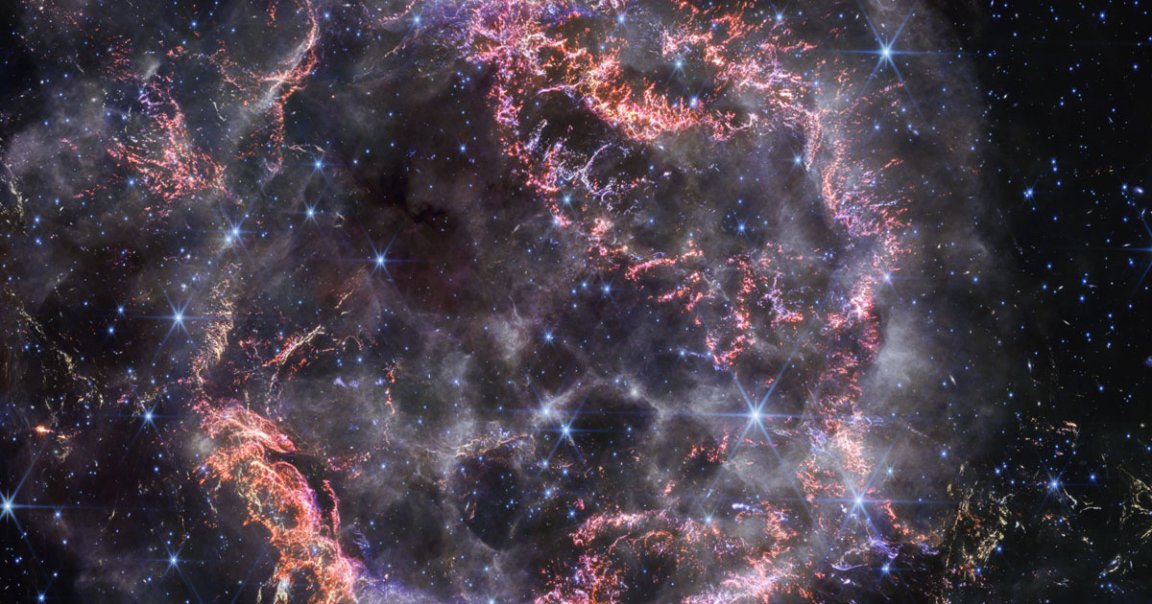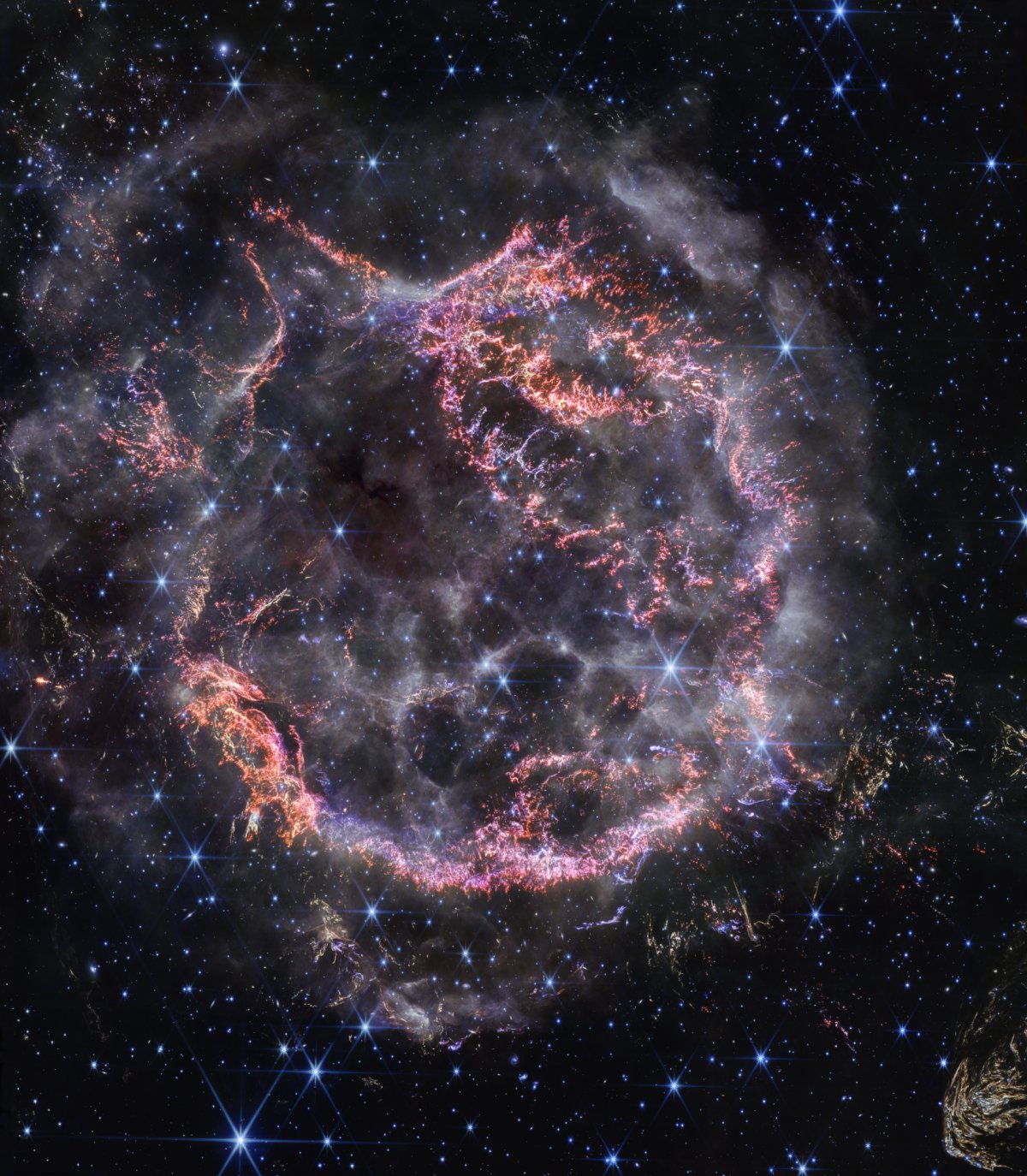
Silent Night
NASA’s James Webb Space Telescope just snapped a glorious image of an exploded star — and not just any celestial body, either.
The image shows Cassiopeia A, one of the most well-studied supernova remnants some 11,000 light-years away in our galaxy, across the wavelength spectrum.
The image was debuted by First Lady Jill Biden during the White House’s Advent Calendar celebration, showing off the observatory’s groundbreakingly sensitive scientific instruments.
Thanks to James Webb’s near-infrared camera (NIRCam), we can see layers of material impacting with the gas being released as the star gears up for its final moments — yet another dazzling visualization of our cosmic neighborhood courtesy of the most powerful telescope ever launched into space.

Supernova Slay
But it’s what the latest image doesn’t show that has astronomers intrigued. Separate observations taken by Webb’s Mid-Infrared Instrument (MIRI) in April revealed previously unknown structures within the inner shell of Cassiopeia A. These features are mysteriously absent in the latest image taken by the telescope’s NIRCam, which has kicked off an entire investigation as to why, per NASA.
The MIRI image showed a greenish feature dubbed the “Green Monster” by researchers that remains unexplained to this day. The new image only shows the faint outlines of this structure, which adds to the mystery.
The new image shows dust and molecules as they swirl around, eventually forming components of new stars and planets.
And the scale of the image is absolutely staggering: some of these filaments, which are too small to be picked up by the telescope’s NIRCam alone, are 10 billion miles across, according to the space agency — or 107 times the distance from the Earth to the Sun.
Much of the intricate structures pictured in the image, which spans a mind-melting 10 light-years or 60 trillion miles, present entirely new avenues of research.
“It’s really unbelievable after all these years studying Cas A to now resolve those details, which are providing us with transformational insight into how this star exploded,” said Purdue University scientist Danny Milisavljevic in NASA’s statement.
Updated to correct a measure of distance.
More on James Webb: James Webb Spots Strange “Ghostly” Object Reappearing